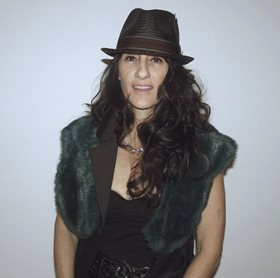 Words and Pictures
Words and Pictures
Lucille Martin by Louise Morrison
Lucille Martin left Western Australia soon after graduating from the Graphic Design course at Perth Technical College, having secured a position in a major advertising agency in Sydney. This role enabled her to amass the skills and know-how to then thrive as a freelancer for the publishers of Vogue and Harper’s Bazaar whilst she continued her studies. These eventually culminated in a Diploma of Production Design from the Australian Film Television & Radio School and a Masters in Art from The University of New South Wales, College of Fine Arts.
Lucille’s first major solo exhibition, Blind Spots, at Sydney’s King Street Gallery, was the result of a visit to South Africa. Passionate about the anti-apartheid movement, she gained entry to the townships of Soweto and Alexandra to document the brutal impact of segregation on individuals. Her determination to share stories of injustice and call for change became the primary motivation for this body of work and for all that she has done since.
She is perhaps best known for her textile works in which she incorporates vintage fabrics, found objects and embroidered text with long, hanging threads. Whilst recent works have addressed Australia’s treatment of asylum seekers, the themes in her work extend beyond human rights to include a range of environmental, political and social concerns. Lucille’s current project addresses the historical exclusion of women’s stories from our national narratives.
Numerous exhibitions, funded projects and residencies reflect Lucille’s professional achievements here and on the eastern seaboard as well as overseas. For many years, she has been based in both New South Wales and in Western Australia but Lucille is now located in Perth and recently secured long-term studio tenancy at Artsource’s Old Customs House in Fremantle. She is excited by the unique opportunities that WA offers artists. For her, its vast diversity of landscapes is inspiring and the potential to connect with the untold stories of the regional and remote communities scattered throughout the State, fire her imagination.
Lucille’s observations about the changes to Perth over the last three decades are informed by her coming and going. She notes that whilst the city has expanded, opportunities for visual artists seem to have diminished. “There appears to be less tangible support from State institutions for local practice and there are fewer commercial galleries.” Lucille also expresses the view that many local artists are competing in public art or art awards but notes that these endeavours reward certain types of practice, which potentially alters the nature of our collective artistic output. Yet, she observes, our own attitudes to the pursuit of opportunities elsewhere and the constraints of distance and isolation seem unchanged despite the solutions offered by more affordable travel and communications technology.
.aspx) “Broadly speaking, the visual arts haven’t got time to navel gaze. We don’t want another generational exodus of amazing talent to leave the West. We need visionaries...
“Broadly speaking, the visual arts haven’t got time to navel gaze. We don’t want another generational exodus of amazing talent to leave the West. We need visionaries...
to nurture this great State and what we have, geographically positioned next to Asia and alongside the rich diversity of our Indigenous artists.”
Lucille is keen to head up north but also to New York in the near future, exemplifying her approach to geography. She has physically traversed the country countless times but is aware that, in her case, attitudinal shifts are equally important.
Louise Morrison is an artist and a lecturer at Central Institute of Technology. She is studying towards a Masters in Art History and Curatorial Studies with a focus on historical and contemporary practise in Western Australia.
This article featured in the Artsource Newsletter, Winter 2014.